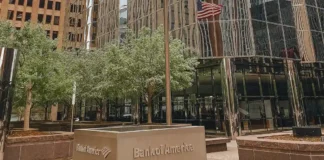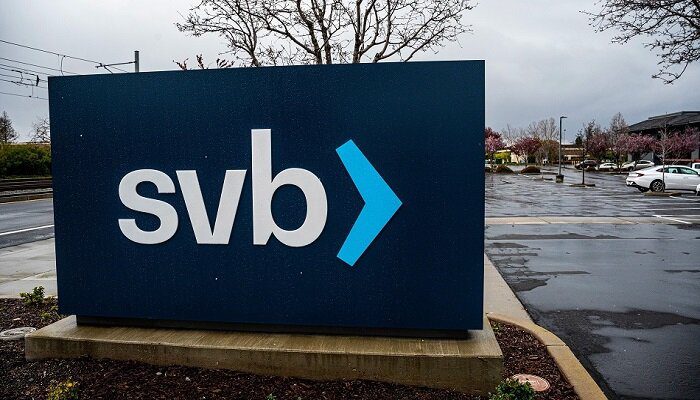U.S. authorities took extraordinary measures on March 12 to rebuild trust in the banking system after the collapse of Silicon Valley Bank threatened to spark a wider financial disaster.
Despite a rollercoaster weekend, regulators said that customers of the collapsed bank will have access to all of their deposits and that a new facility to provide banks with emergency capital will be established. The Federal Reserve also created a simpler way for banks to borrow from it in times of need.
While the efforts offered some comfort to Silicon Valley corporations and global markets on March 13, concerns about larger financial risks remained, casting doubt on the Fed’s commitment to fast interest rate hikes.
According to Karl Schamotta, chief market strategist at Corpay in Toronto, experts believe that the actions taken by the Fed, Treasury, and (the Federal Deposit Insurance Corp.) will effectively end the psychological doom loop across regional banking sector.
But still, whether fairly or unfairly, the episode will contribute to increased levels of background volatility, with investors on the lookout for other cracks to appear as the Fed’s policy tightening continues.
Authorities also acted quickly to liquidate New York’s Signature Bank, which had recently come under fire.
Lingering financial sector fears weighed on Asian bank shares, with Japan’s Mitsubishi UFJ hitting a two-month low and Singapore’s DBS hitting a four-month low. HSBC and Standard Chartered Hong Kong shares recovered early losses to trade near flat.
In early trade, European stock indexes declined 0.6%, while banking stocks sank slightly more than 1%. Stock futures in the United States were higher. Asian shares outside of Japan rose more than 1%, while the Nikkei fell 1%.
The Biden administration’s action highlights how the relentless campaign by the Fed and other major central banks to combat inflation is putting strain on the monetary system and global markets.
Silicon Valley Bank (SVB), a startup sector cornerstone, was a product of the decades-long era of cheap money, with inherent vulnerabilities that rendered it particularly susceptible. Yet, as the bank experienced a run last week, concerns that other regional banks matched similar characteristics spread rapidly.
With the Fed prepared to raise rates further, investors believe the financial sector is not yet fully recovered.
Goldman Sachs analysts said because of the stress in the banking sector, they no longer expect the Fed to raise rates by 25 basis points at its next policy meeting on March 21 and 22.
According to Tallbacken Capital Advisors CEO Michael Purves, investors can prepare to deal with a lot of event risk and continue into the future. There will be unanswered questions with other regional banks.
Protection For Depositors
The fall of SVB, the greatest bank failure since 2008, raised questions about whether small-business clients would be able to pay their employees because the FDIC only protects accounts up to $250,000.
As per the FDIC, 89% of SVB’s $175 billion in deposits were unsecured as of the end of 2022.
According to a joint statement issued on March 12 evening by US Treasury Secretary Janet Yellen, Fed Chair Jerome Powell, and Federal Deposit Insurance Corporation Chair Martin Gruenberg, all depositors will be paid in full, including those whose balances exceed the maximum government-insured threshold.
A senior U.S. Treasury official stated that the moves taken will protect depositors while also giving further support to the banking sector as a whole, although officials and regulators will continue to monitor the stability of the financial system.
The companies are not being helped out. The depositors are safe, the report noted.
The risk would be carried by the Deposit Insurance Fund, with sufficient cash to do so.
According to the official, providing the systemic risk exemption was regarded as more expedient than waiting for a potential buyer.
Wiped Out
Account holders of New York’s Signature Bank, which was closed down by the state’s financial regulator on March 12, will also be made whole at no cost to them, according to Treasury officials.
Signature, like SVB, had a tech-focused customer, and the securities on its balance sheet had deteriorated as interest rates rose. Over a quarter of Signature’s deposits originated from the cryptocurrency sector as of September, however, the bank said in December that it would reduce its crypto-related assets by $8 billion.
While all customer savings will be safe, new measures implemented on March 12 would wipe out stock and bondholders in both SVB and Signature Bank, according to a senior US Treasury official.
According to the official, the actions would help to restore market confidence along with the Fed’s decision to make sure financial institutions can satisfy the needs of all of their depositors.
Fed fund futures rose on March 12, implying only a 17% chance of a half-point rate hike by the Fed when it meets next week, down from 70% before the SVB announcement last week.
The Fed said a new bank term funding program would make additional revenue available through it, which would grant loans of up to one year to depository institutions, supported by Treasuries and other assets these institutions own.
When the coronavirus prompted financial panic in March 2020, the Federal Reserve launched a series of initiatives to keep credit flowing by cutting borrowing charges and extending the terms of direct loans. By the end of that month, the Fed’s discount window facility had been used for more than $50 billion.
There had been no signs of usage ramping up until the middle of last week, before SVB’s collapse, with Fed data showing weekly outstanding amounts of $4 billion to $5 billion since the beginning of the year.
Fallout in the UK
In Britain, where SVB has a subsidiary, the authorities and the Bank of England met over the weekend to try to find a solution that would keep the local institution from failing.
On March 12, in London, HSBC announced the acquisition of Silicon Valley Bank UK for one pound. As of March 10, the subsidiary had loans totalling approximately 5.5 billion pounds and deposits totalling approximately 6.7 billion pounds, according to the company.
Despite the fact that SVB UK is a small company, HSBC’s balance sheet exceeds $2.9 trillion, and SVB’s failure would force Britain’s start-up industry to collapse, which would bring about calls from the sector for government participation.
According to a weekend poll by an industry organization seen by Reuters, British start-ups funded by venture capital have about 2.5 billion pounds locked up in SVB UK, mostly in deposits.



















